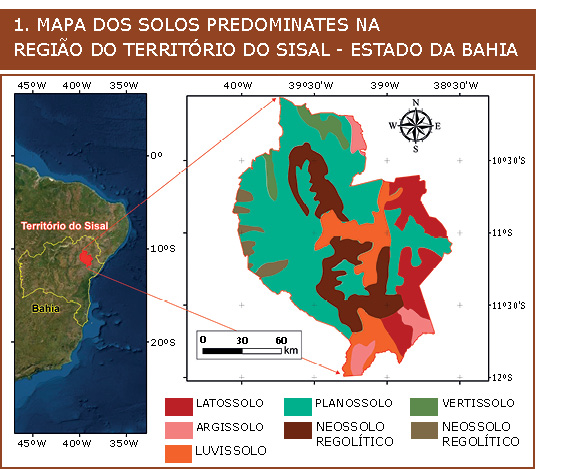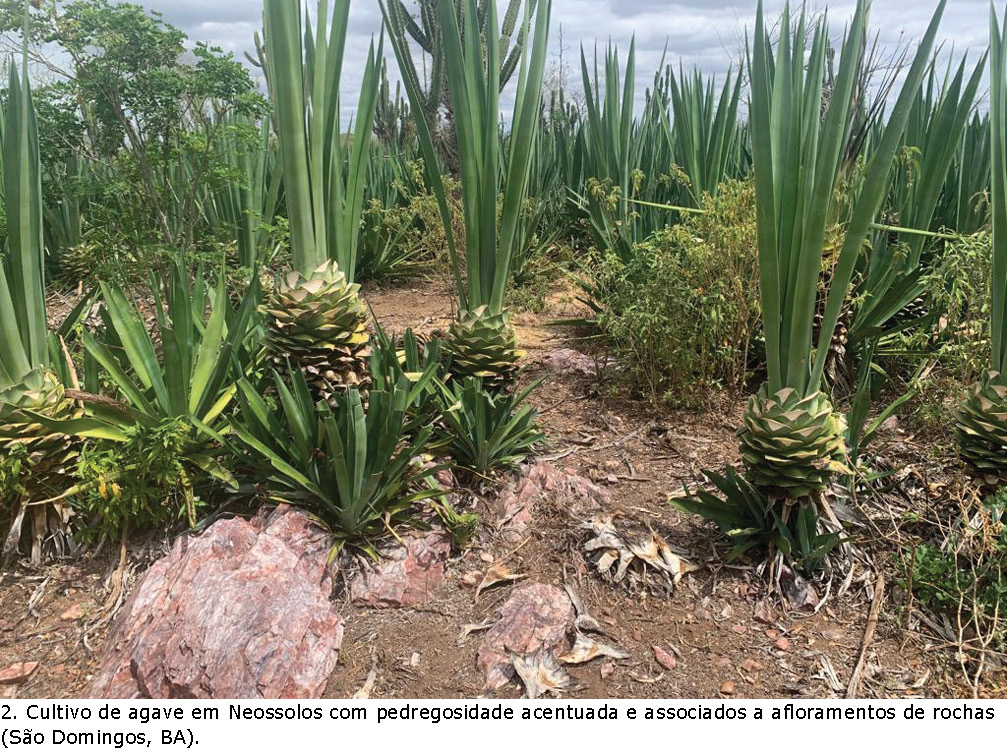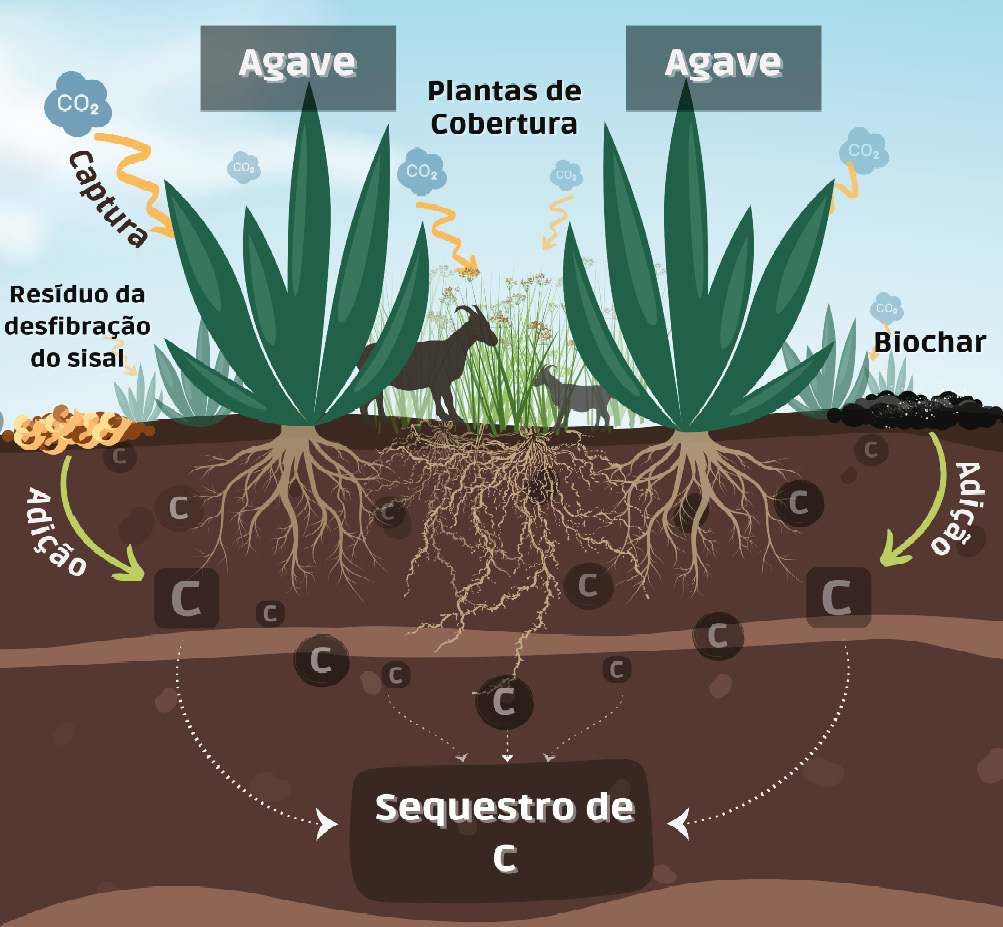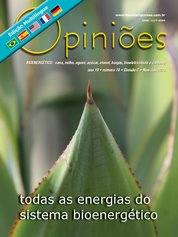Maurício Roberto Cherubin
Professor do Departamento de Ciência do Solo da Esalq/USP
OpAA74
Agave nos solos do sertão brasileiro: sinergia entre energia e sequestro de carbono
Coautores: Tiago Osório Ferreira e Carlos Eduardo Pellegrino Cerri, Professores do Depto de Ciência do Solo da Esalq/USP
Aproximadamente, um terço da população rural nos países em desenvolvimento vive em regiões áridas e semiáridas, enfrentando escassez recorrente de água e insegurança alimentar. Além disso, essas regiões são as mais vulneráveis aos atuais e futuros cenários de mudanças climáticas. No Brasil, o semiárido se estende por 12% do território nacional (900.000 km2) e abriga cerca de 28 milhões de pessoas, englobando os nove estados da região Nordeste e a parte norte do estado de Minas Gerais.
Aproximadamente, um terço da população rural nos países em desenvolvimento vive em regiões áridas e semiáridas, enfrentando escassez recorrente de água e insegurança alimentar. Além disso, essas regiões são as mais vulneráveis aos atuais e futuros cenários de mudanças climáticas. No Brasil, o semiárido se estende por 12% do território nacional (900.000 km2) e abriga cerca de 28 milhões de pessoas, englobando os nove estados da região Nordeste e a parte norte do estado de Minas Gerais.
O regime climático característico, marcado por chuvas escassas (<800mm), elevadas taxas de evapotranspiração (até 2500 mm ano-1) e longos períodos de seca, consiste em um dos maiores desafios para a sustentabilidade da agricultura e da manutenção dos ecossistemas naturais da região. Estudos recentes apontam para uma intensificação de processos, como a desertificação na última década, principalmente em áreas de pastagem e do bioma caatinga, impactando, portanto, os ecossistemas naturais e agrícolas. Nesse contexto de degradação, o combate à perda e à depauperação dos solos do semiárido despontam como um dos maiores desafios da ciência para um futuro marcado por um cenário de mudanças climáticas.
O solo constitui-se como o maior reservatório de carbono (C) terrestre e, portanto, é peça-chave no combate à desertificação, às mudanças climáticas e à promoção de segurança alimentar. Estima-se que a quantidade de carbono estocada nos solos até um metro de profundidade está em torno de 1.550 Pg de C, o que representa cerca de três vezes a quantidade de C presente na biosfera (vegetação e animais) e duas vezes a quantidade contida na atmosfera terrestre.
Somente nos primeiros 30 cm, estocam quase a mesma quantidade de C (800 Pg) armazenada no compartimento atmosférico. Portanto sistemas de produção baseados em práticas de manejo que favoreçam a captura de C atmosférico pelas plantas e aumento dos estoques de C do solo contribuem significativamente para a redução das concentrações de C na atmosfera e, por consequência, na atenuação do efeito estufa e das mudanças climáticas globais.
Somente nos primeiros 30 cm, estocam quase a mesma quantidade de C (800 Pg) armazenada no compartimento atmosférico. Portanto sistemas de produção baseados em práticas de manejo que favoreçam a captura de C atmosférico pelas plantas e aumento dos estoques de C do solo contribuem significativamente para a redução das concentrações de C na atmosfera e, por consequência, na atenuação do efeito estufa e das mudanças climáticas globais.
Nesse contexto, o solo é um componente fundamental dentro do BRAVE – Programa Brasileiro para o desenvolvimento do Agave. Apesar da enorme dimensão do semiárido brasileiro, o projeto, em uma primeira fase, irá concentrar suas atividades no sertão da Bahia, região conhecida como “Território do Sisal”. Essa região é marcada por solos típicos (representativos) do semiárido brasileiro, com predominância de Planossolos, Neossolos (Litólicos e Regolíticos), Luvissolos e Vertissolos, conforme demonstrado na figura 1.
 Os Planossolos se caracterizam por aumentos expressivos de argila em profundidade e, portanto, pela presença de um marcado gradiente textural em profundidade. São solos com severas limitações do ponto de vista físico-hídrico, em especial com relação à drenagem e infiltração de água e, comumente químicas, como por exemplo a presença de sais.
Os Planossolos se caracterizam por aumentos expressivos de argila em profundidade e, portanto, pela presença de um marcado gradiente textural em profundidade. São solos com severas limitações do ponto de vista físico-hídrico, em especial com relação à drenagem e infiltração de água e, comumente químicas, como por exemplo a presença de sais.
 Os Planossolos se caracterizam por aumentos expressivos de argila em profundidade e, portanto, pela presença de um marcado gradiente textural em profundidade. São solos com severas limitações do ponto de vista físico-hídrico, em especial com relação à drenagem e infiltração de água e, comumente químicas, como por exemplo a presença de sais.
Os Planossolos se caracterizam por aumentos expressivos de argila em profundidade e, portanto, pela presença de um marcado gradiente textural em profundidade. São solos com severas limitações do ponto de vista físico-hídrico, em especial com relação à drenagem e infiltração de água e, comumente químicas, como por exemplo a presença de sais.
Os horizontes de subsuperfície, caracterizados por elevada densidade e baixa condutividade hidráulica, favorecem eventos de má drenagem durante as épocas de chuva, assim como a falta de aeração para o sistema radicular das plantas e a erosão.
Os Neossolos Litólicos e Regolíticos são, por sua vez, marcados pela baixa profundidade efetiva e pela presença de contato com a rocha dentro dos primeiros 50cm de solo (e.g., Neossolos Litólicos), ou logo abaixo (e.g., Neossolos Regolíticos). São solos marcados pela presença de cascalho, ocasionalmente associados a afloramentos de rocha (Figura 2) e que, muitas vezes, apresentam pedregosidade e rochosidade no terreno. Em alguns casos, encontram-se associados a condições de relevo mais movimentado, com declividades acentuadas. Na região do sisal, os solos dessa ordem encontram-se associados a diferentes tipos de rochas, em especial aos terrenos marcados pela presença de rochas graníticas e gnáissicas.


Os Luvissolos englobam solos que apresentam diferenciação textural dentro do perfil (horizonte superficial empobrecido em argila seguido de um horizonte com acúmulo de argila em subsuperfície), pela presença de argilas de alta atividade e de alta fertilidade química. São, em geral, solos pouco profundos, com baixos teores de carbono orgânico e, usualmente, com pedregosidade na superfície.
Os Vertissolos, por sua vez, são solos argilosos com altas proporções de argilas expansivas e que, portanto, comumente formam rachaduras profundas nas épocas secas. São solos de elevada fertilidade natural, entretanto, com características físicas que dificultam seu manejo em condições de uma agricultura pouco tecnificada.
Dadas as características dos solos presentes, o manejo torna-se bastante complexo e desafiador. No BRAVE, serão estudadas alternativas de manejo que visem aumentar o sequestro e estabilização do C do solo e, assim, estabelecer sistemas de produção que resultem em um balanço de C positivo. Para tanto, uma das metas do BRAVE será o estabelecimento de práticas de manejo que irão incrementar a produção de biomassa do agave e consequente quantidade de C atmosférico (CO2) capturado por essas plantas. Em paralelo, serão estudados sistemas de produção intensificados, associando práticas de manejo que adicionem C aos solos (Figura 3) por outras vias, como: 1) consorciação do agave com plantas de cobertura, como capim buffel (Cenchrus ciliares), com ou sem integração com pecuária (caprinos, ovinos e bovinos), 2) adição de resíduos orgânicos frescos, como o resíduo da desfibração do sisal e estercos, e 3) adição de biochar (biocarvão), um composto orgânico obtido a partir da pirólise da biomassa, que poderá ser produzido a partir do cultivo de plantas adaptadas ao sertão, como o pau-de-rato (Poincianella pyramidalis).
O estabelecimento de novos modelos de produção de agave no campo, fazendo uso de técnicas inovadoras de manejo adaptadas à realidade da agricultura no sertão nordestino, tem o potencial de fazer da cultura do agave uma matriz de transformação da realidade social, econômica e ambiental de uma das regiões mais extensas e singulares do Brasil.





